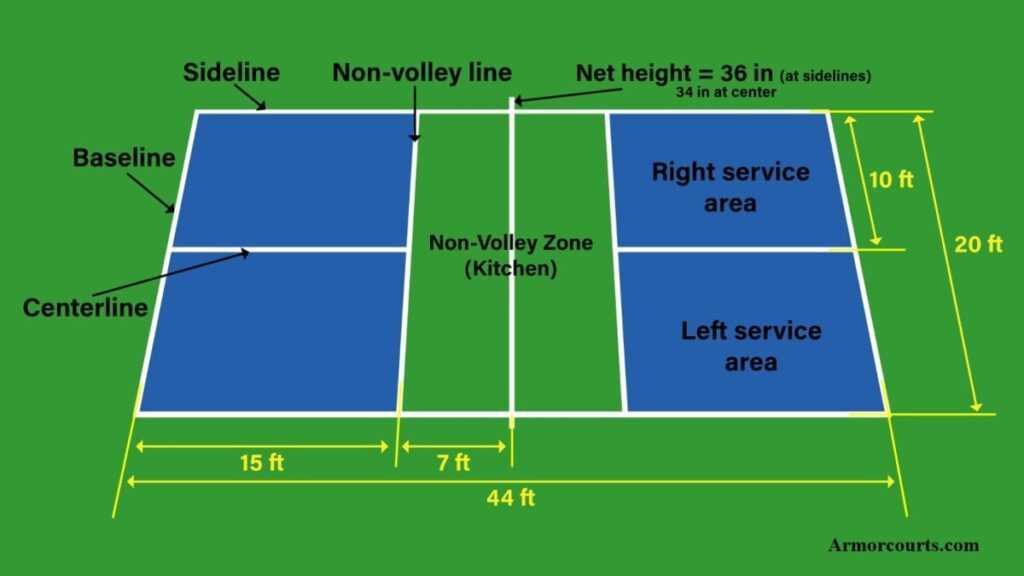Sustainable Practices in Pickleball Court Building And Construction You Must Know
As the appeal of pickleball continues to rise, so also does the requirement for lasting methods in court building and construction. This method not only addresses environmental concerns but additionally boosts the longevity and functionality of the courts. From picking eco-friendly products to applying effective water drainage and energy-saving illumination services, there are countless approaches to think about. The influence of these techniques expands much beyond the court itself. Recognizing exactly how each element adds to an extra sustainable future welcomes additionally expedition into the elaborate balance in between recreational growth and ecological stewardship.
Selecting Eco-Friendly Products
Picking environmentally friendly materials is an essential action in the building and construction of lasting pickleball courts. The option of sustainable materials not just minimizes environmental effect yet additionally boosts the long life and efficiency of the court. Key materials include recycled rubber for the surface area, which offers superb resilience and shock absorption while drawing away waste from land fills.
In addition, making use of in your area sourced materials decreases transportation emissions and supports local economic situations. Pickleball court construction. Utilizing native woods for fencing and seats can give a sustainable aesthetic while ensuring durability against the aspects.
Integrating permeable products for court structures can additionally contribute to sustainability by enabling for all-natural water drainage and lowering overflow. These options not only secure local ecological communities however additionally promote healthier play environments.
Effective Water Drainage Solutions
While the choice of environment-friendly products is vital, applying efficient drainage options is similarly important for preserving lasting pickleball courts. Proper drain not just shields the court surface area from water damages yet additionally minimizes erosion and runoff, promoting environmental integrity.
Effective drainage systems can include permeable paving, which enables water to infiltrate the ground as opposed to pooling externally. This lowers the likelihood of standing water, which can lead to mold and various other maintenance problems. In addition, including purposefully put drain channels and swales can route excess water far from the court area, guaranteeing a dry having fun surface area and preventing soil disintegration.
Utilizing indigenous greenery in the landscape design around the courts can even more boost drainage by taking in excess water and reducing runoff. These plants require much less irrigation and advertise biodiversity, lining up with lasting methods.
Moreover, it is essential to routinely preserve the drainage system to ensure its long-lasting efficiency. This consists of cleaning debris and monitoring for clogs. By focusing on efficient water drainage options, pickleball court fabricators can dramatically add to the sustainability and long life of the facility, inevitably benefiting both players and the setting.
Energy-Efficient Lights Options
As the demand for pickleball continues to grow, incorporating energy-efficient lights alternatives into court design has ended up being progressively essential for sustainability. Standard lights systems usually consume excessive power, adding to greater functional costs and environmental effect. As a result, taking on modern-day, energy-efficient modern technologies is essential for both brand-new building and constructions and remodellings.
LED (Light Emitting Diode) lighting sticks out as a top selection because of its long life and energy savings (Pickleball court construction). Compared to standard illumination, LEDs use around 75% less power and can last approximately 25 times longer, significantly reducing maintenance prices. Moreover, the directional nature of LED lighting lessens light pollution, guaranteeing that lighting is concentrated on the court instead than surrounding locations.

Sustainable Surface Alternatives
Checking out sustainable surface area options for pickleball courts has actually gotten grip among players and contractors alike. The emphasis on green materials not only lines up with the expanding ecological recognition yet also improves the efficiency and toughness of the courts.
One prominent alternative is the usage of recycled rubber, which can be sourced from used tires. This material offers exceptional shock absorption, decreasing the threat of injuries for players while promoting sustainability. Additionally, modular floor tiles made from recycled plastics supply an additional practical option. These tiles are simple to change and set up, and their adaptability permits various court configurations.
Natural turf courts are also emerging as a sustainable option, advertising biodiversity and reducing the warm island result. However, they need normal upkeep and water, which might not align with all sustainability goals.

Water Preservation Methods

An additional efficient technique involves the installment of rainwater harvesting systems. These systems keep and collect rain for usage in preserving court surface areas and landscaping. This approach not just conserves safe and clean water but additionally reduces reliance on community resources.
Furthermore, using drought-resistant landscaping around the courts is essential. Indigenous plants call for much less water and are better adapted to neighborhood climate conditions, hence decreasing general water intake. Additionally, making use of efficient watering systems, such as drip irrigation, makes sure that water is delivered directly to plant roots, minimizing evaporation and waste.
Conclusion
Integrating lasting techniques in pickleball court construction dramatically adds to environmental preservation and resource effectiveness. Making use of environmentally friendly materials, carrying out efficient drain options, and taking on energy-efficient illumination options can substantially lower eco-friendly influence. Discovering lasting surface choices and using water conservation methods enhance the total sustainability of these leisure facilities. By focusing on these techniques, the building of pickleball courts can line up with have a peek here broader ecological objectives while promoting long life and functionality within areas.
As the popularity of pickleball proceeds to climb, so too does the demand for lasting practices in court construction.Selecting eco-friendly materials is a crucial action in the construction of sustainable pickleball courts. By prioritizing energy-efficient lighting choices, pickleball court builders can contribute to a much more sustainable future while satisfying the demands of stakeholders and players alike.Integrating lasting surface options not only enhances the performance of pickleball courts but also paves the way for implementing effective water conservation techniques.Incorporating sustainable techniques in pickleball court building and construction dramatically adds to environmental preservation and resource efficiency.
Comments on “Pickleball Court Construction-- Essential Tips for a Sturdy Court”